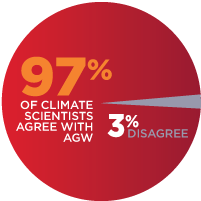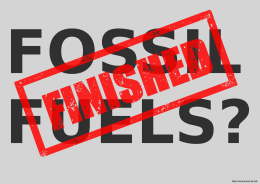Charges of conspiracy, collusion and connivance.
| Where there’s smoke, there’s fire, So if there’s no smoke, does it mean there’s a conspiracy to hide the fire, or is this a red flag? |
How to recognise this tactic
Conspiracy theorists usually start by targeting weaknesses in an accepted model, then propose a conspiracy that explains why their ‘better’ model has been suppressed. Although there can be overwhelming evidence favouring the accepted model, they claim that this simply means the conspiracy has been successful. Likewise, they see lack of any evidence for a conspiracy as demonstrating how clever the conspirators are. As time goes on, more and more people need to be added to the conspiracy to explain why it is not exposed.
A conspiracy theory gives believers someone tangible to blame for their perceived predicament, instead of blaming it on impersonal or abstract social forces.
Ted Goertzel, American sociologist, 2010
Why do people devise conspiracy theories?
People turn to conspiracy theories, usually as a last resort, when their claims have been thwarted by scientific evidence. They aim to persuade us that the evidence cannot be trusted because scientists or other influential figures have colluded to manipulate it.
What’s wrong with this tactic
Although real conspiracies do occur, most conspiracy theories are false. They have the effect of diverting attention from real problems and preventing their solutions. Unwarranted conspiracy theories often originate from those who have a vested interest in derailing the consensus model.
As with any theory, a conspiracy theory should be accepted only if there is strong supporting evidence from the real world. Conspiracy theorists typically sidestep this requirement by insisting that absence of evidence shows that the conspiracy must be working – to them, absence of smoke is proof that the fire is well-hidden.
The weak point of unwarranted conspiracy theories is that, as time goes on, no evidence of conspiracy emerges despite the urgings of the theorists. They then typically expand the number of people allegedly involved, or attribute them with unrealistic powers, to account for the cover-up. In fact, if there is a real conspiracy, the greater the number of people involved, the more likely it is to be uncovered.
Conspiracy theorists often attack the scientific peer review process, claiming that established scientists use it to suppress dissenting voices. The scientific process has evolved to produce reliable results despite of individual scientists’ human weaknesses. It is the most reliable way we have of establishing warranted belief. Although it is not perfect, the chances of widespread global scientific conspiracy are essentially non-existent.
What to do when confronted by conspiracy theories
The problem is to decide whether recourse to a conspiracy is warranted in a particular situation. Start by establishing exactly what is being claimed.
- How does the conspiracy explain the facts? What’s wrong with the accepted explanation?
- How many people are involved? Who are they? What do they have to gain? How is the conspiracy resourced and maintained?
- Why have there been no leaks or defections? How is the conspiracy hidden from co-workers and colleagues?
Look for indicators that show the theory is imaginary. A conspiracy theory is probably unwarranted, and should be rejected, if:
- its proponents can provide no real-world evidence for a conspiracy
- it connects a variety of events but there are perfectly good alternative explanations, or evidence for lack of connection.
- it demands a large number of conspirators and/or conspirators with unrealistic power.
- it is built on general suspicion of government/professional/scientific/international institutions.
- its proponents refuse to consider alternative explanations and reject falsifying evidence
Variations and related tactics
Purveyors of the Galileo Gambit like to augment their maverick role with conspiracy theories to explain why they are treated as outsiders by the scientific community. This is usually supplemented by calls for false balance – demands that their model should be given status equal to that of the accepted model.
Conspiracy theories also depend heavily on confirmation bias – the tendency to seek out and promote evidence that supports a favoured hypothesis, while ignoring evidence that falsifies it.
Examples
- Climate-change denier organisations such as the Galileo Movement continually promote conspiracy theories (although they are careful not to use that term) to attack the scientific consensus on climate change. They persist in claiming that the release of climate scientists’ emails in what’s known as ‘Climategate’ provided evidence of a conspiracy. Multiple independent inquiries have shown that this claim is nonsense. Update (04/08/2012): The Galileo Movement has uncovered a new conspiracy, with its manager, Malcolm Roberts telling Ben Cubby of the Sydney Morning Herald (here) that ‘climate change science had been captured by “some of the major banking families in the world” who form a “tight-knit cabal”.’ Watching the Deniers blog has a good compilation of climate denier conspiracies here.
- Anti-vaccination activists are among the most prevalent promoters of conspiracy theories (see here and here). They typically show all of the indicators of unwarranted conspiracy theories listed above. This is despite the fact the scientific studies show that vaccines are safe.
- Update 2013/03/22: A new paper, Recursive fury: conspiracist ideation in the blogosphere in response to research on conspiracist ideation, gives a delightful account of the way conspiracy theorists responded to a study of conspiracy theories by spawning more conspiracy theories.
Further update 2014/03/27: The publishers have retracted this paper in response to threats of legal action. They stress that there were not any issues with the academic and ethical aspects of the study. The paper is still available here. - Update 2013/04/21: For a good send-up of conspiracy theories, see The Conspiracy Theory Flowchart “THEY” Don’t Want You To See at The Reason Stick.
- Update 2014/04/18: Stephan Lewandowsky researches conspiracy theories. Here are some of his answers to questions posted on a Reddit AMA session.
- Update 2014/05/17: The popularity of alternative medicine appears to be strongly correlated with the belief that the medical establishment conspires against it. Edzard Ernst has the story here.
Further reading
The ironclad logic of conspiracy theories and how to break it at The Conversation.
Why Conspiracy Theories Aren’t Harmless Fun at The Conversation.
A grand scheme of scientists at …and Then There’s Physics.
Too many minions spoil the plot at the University of Oxford.
Ted Goertzel’s quote is from Conspiracy theories in science, EMBO reports, Vol 11, No 7, 2010. The ideas on this page owe much to Goertzel’s paper, as they do to Brian Keeley’s 1999 paper Of Conspiracy Theories, Journal of Philosophy, Vol 96, No 3.
| This is one of ScienceOrNot’s Science red flags. See them all here. |









Trackbacks & Pingbacks